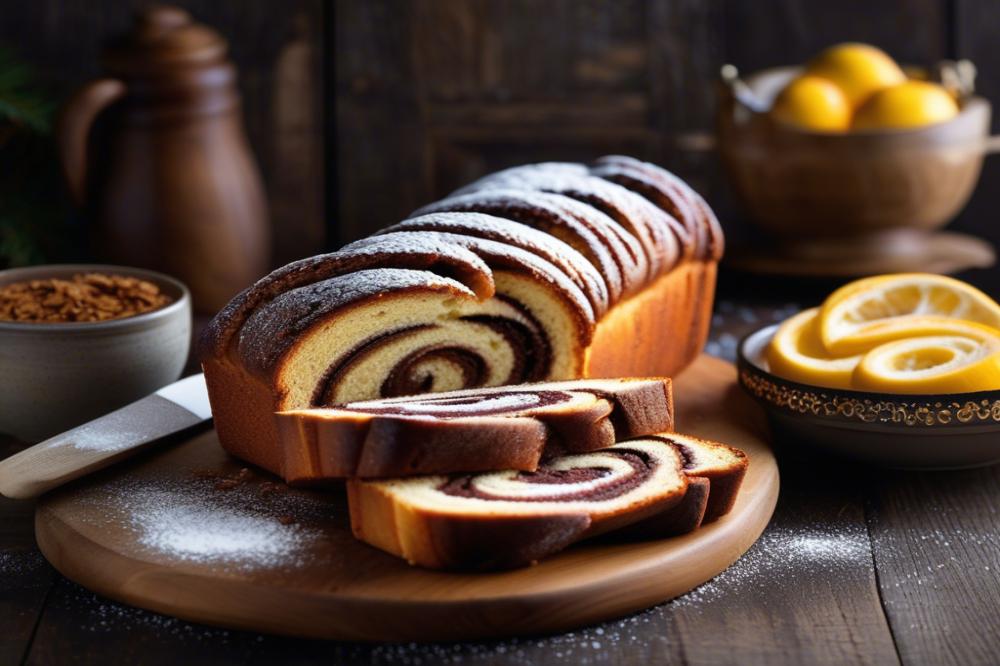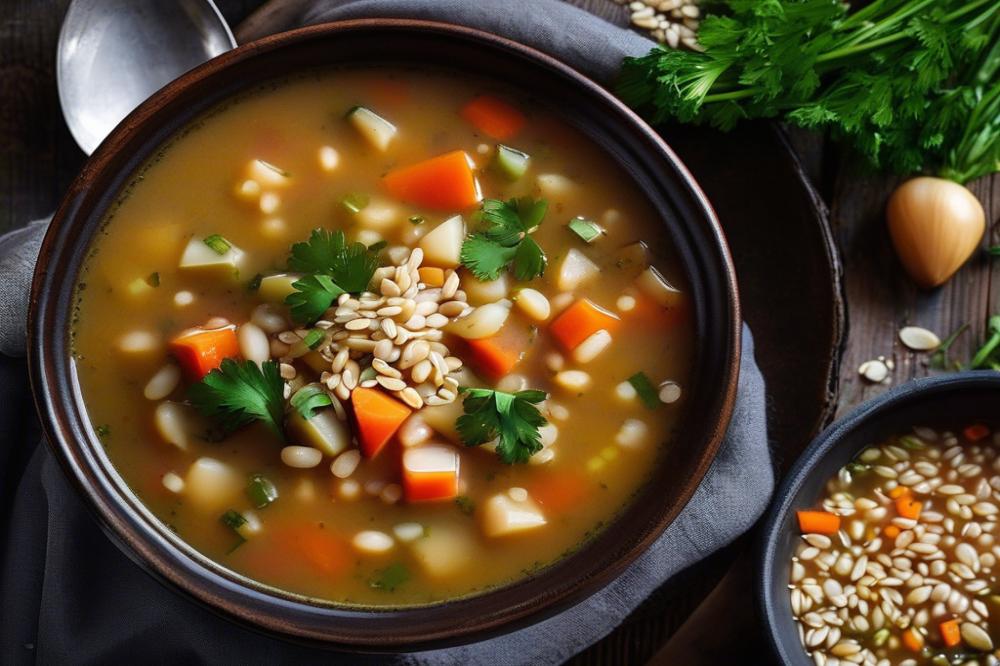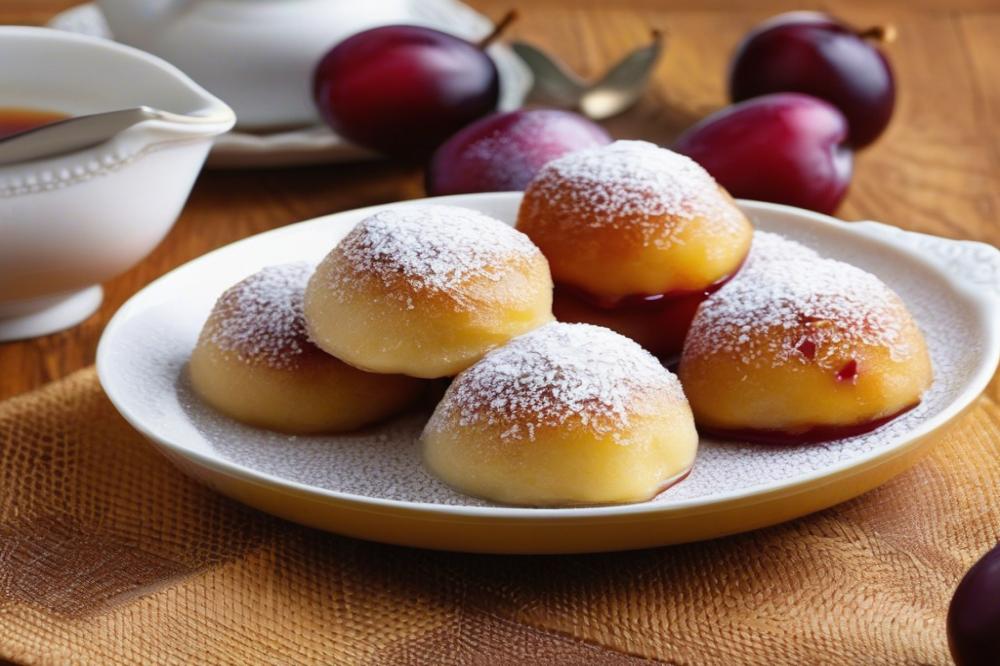Introduction
recipebix.com/makowiec-recipe-polish-poppy-seed-roll”>Polish Babka is a cherished dessert known for its rich flavor and soft texture. This Sweet Yeast Cake boasts a delightful blend of sweetness, often enhanced by the addition of raisins. Its origins trace back many generations, making it a pivotal part of Polish heritage. Family gatherings and cultural celebrations are incomplete without it.
The importance of Babka in Polish culture cannot be overstated. Many families pass down recipes through generations, preserving the art of baking this traditional cake. It represents togetherness and love, embodying the spirit of sharing. During holidays, especially Easter, this dessert becomes a symbol of festivity and joy.
People often bake Babka to mark special occasions or moments of togetherness. Easter, in particular, is a time filled with traditions. Families prepare this homemade delight, creating an inviting aroma that fills their homes. The moist texture and sweet flavor make it an easy favorite among both young and old. Each slice of Babka brings not just taste, but also memories that make gatherings even more special.
What is Polish Babka?
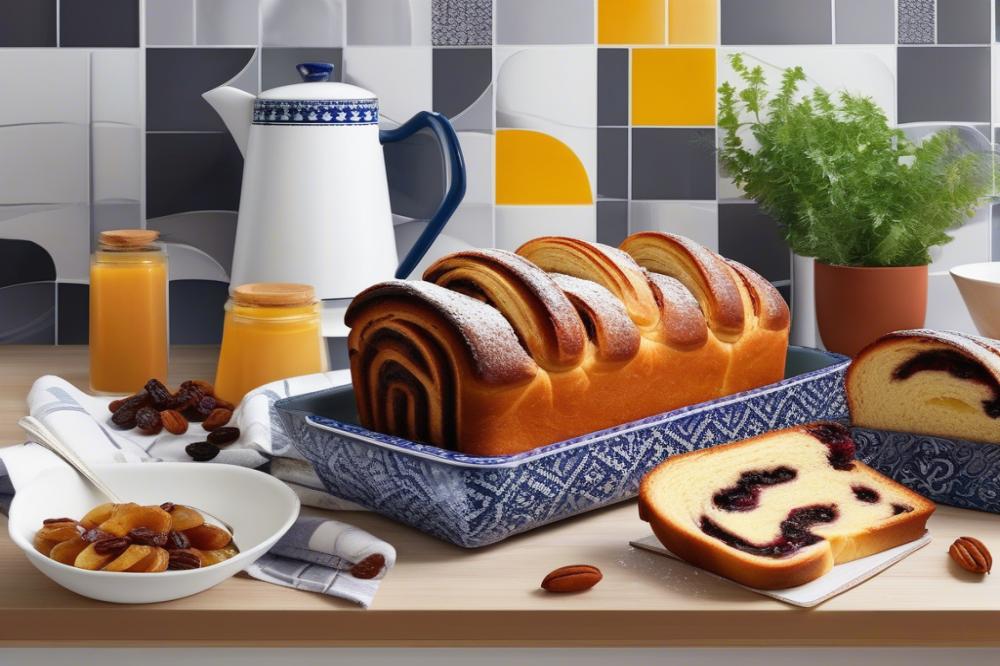
Polish Babka is a delightful dessert that has a rich history. Originating from Jewish communities in Poland, it quickly became a beloved treat among Polish families. The name “babka” translates to “grandmother” in Polish, reflecting the traditional emphasis on family and home-cooked meals.
Definition and history of Babka
This Sweet Yeast Cake is often filled with raisins, chocolate, or fruit. It gains its signature flavor from a careful process of baking, which creates a moist and tender crumb. Over the years, it has evolved but still holds strong roots in Polish culture.
Variations in different regions of Poland
Regional differences showcase the diversity of this beloved cake. In some areas, bakers might add spices like cinnamon or citrus zest. Others may choose to coat the babka in a sugary glaze. Each local twist brings something special to the table, ensuring that every family has its own treasured version.
Significance of raisins in the traditional recipe
Raisins play a crucial role in many traditional recipes. Their natural sweetness complements the dough brilliantly while adding a chewy texture. Not only do they enhance the flavor, but they also symbolize abundance and joy in the baking process. The use of raisins reflects the practice of using accessible ingredients that can be found in every household.
Connection to festive celebrations and family gatherings
Baking babka has become a cherished ritual during festive occasions, particularly at Easter. Families come together to share not only the process but also the joy of eating this dessert. Serving homemade babka at gatherings symbolizes warmth and love, making it an essential part of Polish celebrations. Some even say that having it on the table gives a festive spirit to the atmosphere.
Ingredients and Cooking Instructions
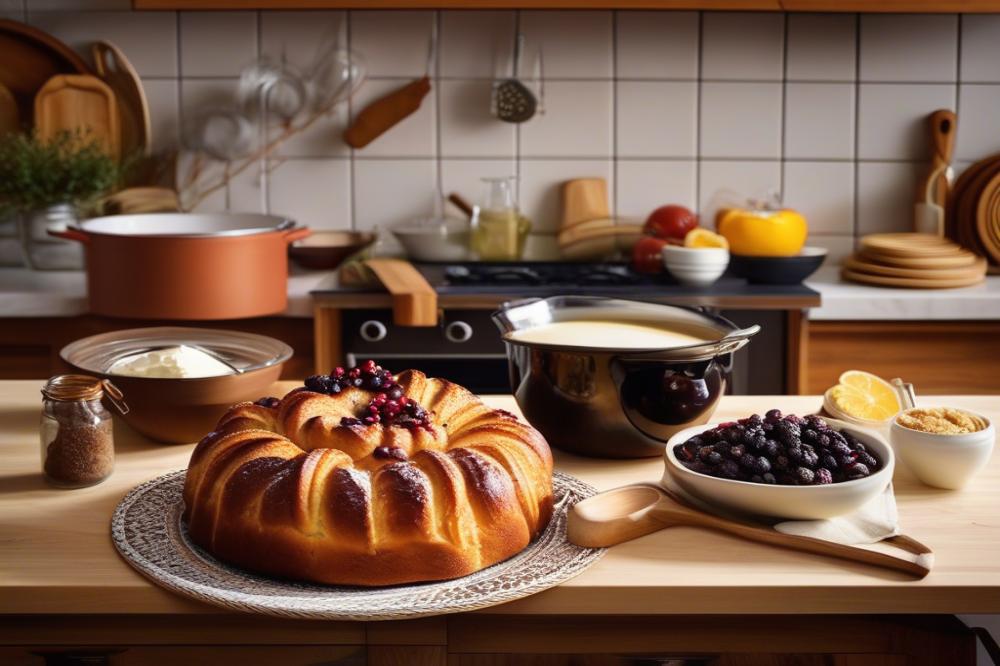
List of Ingredients with Quantities
To make a delightful Polish babka, gather the following ingredients:
- 4 cups all-purpose flour
- 1 cup whole milk
- 1/2 cup unsalted butter
- 1/2 cup granulated sugar
- 4 large eggs
- 2 teaspoons active dry yeast
- 1 teaspoon vanilla extract
- 1/2 teaspoon salt
- 1 cup raisins (soaked in warm water for 20 minutes)
Step-by-Step Cooking Instructions
Follow these easy steps to create your sweet yeast cake:
Begin by preparing the yeast mixture. Warm the milk slightly. In a bowl, combine the milk and yeast. Allow it to sit for about 5 minutes until frothy.
Next, mix the wet and dry ingredients. In a large bowl, whisk together the flour, sugar, and salt. Add the butter, eggs, and vanilla to the yeast mixture. Gradually combine this mixture with the dry ingredients.
Incorporate the raisins into the dough. Make sure they are evenly distributed throughout the mixture. This will keep the dessert moist and tasty.
Knead the dough until it becomes smooth. This will take about 5-10 minutes. Don’t rush this step; kneading is crucial for the cake’s texture.
For the first rise, place the dough in a greased bowl. Cover it with a clean cloth and store it in a warm area. Let it rise until it doubles in size, which usually takes about an hour.
After the first rise, shape the dough into your desired form. You can use a bundt pan for a traditional look. Press down gently to release any air bubbles.
Now, it’s time for the second rise. Cover the shaped dough again and let it rest for about 30 minutes. This helps develop the flavors further.
Preheat your oven to 350°F (175°C). Once the dough has risen, place it in the oven to bake. It should take approximately 30-40 minutes. You are looking for a golden-brown color on top.
Cooling is important. After taking the cake out of the oven, allow it to cool in the pan for a few minutes. Then transfer it to a wire rack to cool completely. This will help maintain its festive texture.
Slice and serve your homemade Polish babka as a delightful treat for any occasion, especially during Easter celebrations. Enjoy the moist, sweet flavors and share with loved ones!
Nutritional Information
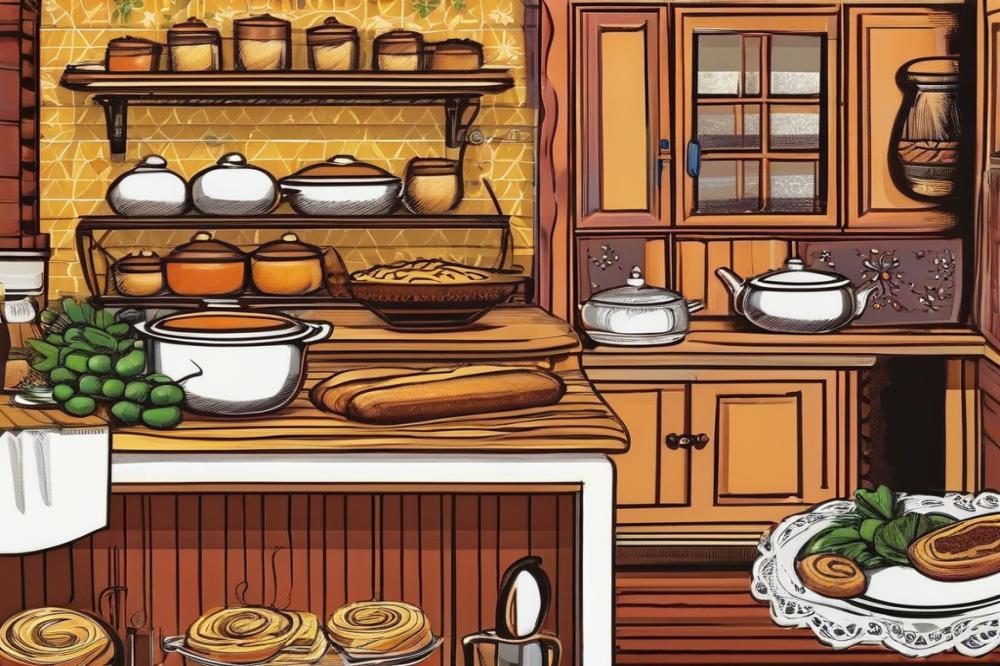
Understanding the nutritional content of each ingredient in a Polish Babka is important for anyone who loves baking and wants to maintain a healthy diet. Yeast, flour, and sugar are the main components of this traditional dessert. When you add butter, eggs, and raisins, the nutritional profile changes significantly. Each ingredient plays a role in the overall health benefits and caloric content.
Breakdown of Nutritional Content for Each Ingredient
Flour provides carbohydrates which give energy. One cup of all-purpose flour has about 455 calories. Sugar adds sweetness but also contributes around 774 calories per cup. Butter, being rich, contains roughly 1,600 calories per cup. Eggs offer protein and about 70 calories each. Raisins have fiber and iron but also add about 108 calories for a small serving.
Caloric Information Per Serving
When you slice the homemade creation, each piece of Polish Babka typically holds about 200 to 250 calories. This can vary based on portion size and recipe variations. If you’re mindful of portion control, you can enjoy this festive dessert without overindulging. Sharing with friends and family also helps manage servings while enhancing your experience.
Health Benefits of Homemade Polish Babka
Baking your own allows for customization. You can choose organic ingredients or substitute items to make the treat healthier. Raisins, a critical ingredient, are a great source of antioxidants and can benefit digestion. Whole grains can also be used for added fiber. Making this at home gives you control over what goes in, which is a plus for anyone looking to eat better.
Discussion of Dietary Considerations
While Polish Babka is delicious, dietary considerations matter. Those with gluten sensitivities need to use gluten-free flour to enjoy this dessert. People watching their sugar intake can reduce the amount in the recipe or utilize alternatives like honey or stevia. Each adjustment can yield a different flavor profile while still keeping the essence of this easy-to-make pastry alive. Remember that moderation is key. Indulging occasionally can bring joy without overloading on calories or sugar, especially during special occasions like Easter.
Tips for Making the Perfect Polish Babka
Best Practices for Yeast Activation
First, start with quality ingredients. Using fresh yeast is crucial for the best results. Warm water is perfect for activating the yeast. It should feel like warm bath water to the touch. Add a teaspoon of sugar to the water to feed the yeast. Let it sit for about five to ten minutes. Bubbles should form on the surface. This means the yeast is alive and ready to work with your dough.
Variations to the Recipe
Don’t be afraid to add your touch to the recipe. Citrus zest can brighten the flavors of your babka. Consider using lemon or orange zest for a refreshing twist. Chopped nuts can add a delightful crunch. Walnuts or almonds work beautifully with the sweet dough. For a unique flavor, try including a splash of vanilla extract or almond essence as well.
Storage Tips to Keep the Babka Moist
A well-stored babka can stay delicious for days. Wrap the cake tightly in plastic wrap after it cools. This helps keep the moisture in and preserves freshness. Store it at room temperature for up to three days. For longer storage, freeze it. Slices can be wrapped individually and frozen for a quick treat later. Defrost at room temperature whenever you crave a piece.
Common Pitfalls and How to Avoid Them
Baking can come with challenges. A common mistake is under-kneading the dough. Proper kneading develops the gluten, making the final product airy and light. Another issue arises from not allowing adequate rising time. Be patient and let the dough double in size. This step is vital for a fluffy finished dessert. Lastly, be careful not to overbake. Check for doneness by inserting a toothpick; it should come out clean. With a few simple strategies, you can create an easy, festive treat that friends and family will adore.
Cultural Significance and Traditions
Role of Polish Babka in Easter Celebrations
Polish Babka holds a special place in Easter traditions. Families often bake this sweet dessert together as part of their holiday preparations. Its moist texture and sweet flavor create a festive atmosphere. On Easter morning, it is often served alongside other traditional dishes. This cake symbolizes new life and renewal, making it perfect for the holiday. The process of baking brings families closer, as they share stories and create memories.
Stories and Anecdotes from Families
Many families have unique stories tied to their Babka recipe. A grandmother’s secret ingredient can spark conversations around the dining table. Children watching their parents bake often feel a sense of pride when they help. Each family’s version may include different additions, like raisins or spices. These small variations are what make the dessert special. Some people even share their Babka with neighbors, strengthening community bonds. This dessert becomes a part of their family history, lovingly passed down through generations.
The Allure of Homemade Desserts in Polish Culture
Homemade baking is cherished in Polish culture. Many believe that nothing beats the taste of a freshly baked cake. This extends beyond Babka to various traditional sweets. The act of baking can be easy yet rewarding. Crafting a dessert from scratch provides a sense of accomplishment. Local bakeries offer delicious options, but homemade versions resonate deeply. The aroma of baking wafts throughout homes, creating anticipation. It’s not just about the taste; it’s also about connection and love. Polish desserts truly enhance family gatherings, making them even more special.
Embracing the Joy of Baking
Baking a Polish Babka brings a delightful experience to the kitchen. A blend of warm aromas fills the air, instantly lifting spirits. Every step in the process can be enjoyable, from mixing the dough to watching it rise. The moment when you finally pull it from the oven is truly special. Its golden crust and sweet, inviting scent signal the delicious treat waiting to be enjoyed.
Trying out this recipe at home is worth the effort. Rarely do you find a dessert that combines so well with coffee or tea like this one. Don’t let fear of complexity stop you; the process is manageable. With a few ingredients, plus raisins for a touch of sweetness, you can create something amazing. Imagine sharing this treat with family and friends. It can easily become a cherished centerpiece for gatherings.
Think of baking as a way to keep traditions alive. Each bite of this cake connects you to a rich cultural history that has been passed down through generations. Cooking helps us to remember our roots while also sharing them with others. As you follow the steps, you’re not just making a cake; you’re participating in a time-honored ritual. Preserving these customs nurtures a deeper understanding of where we come from.
So, gather your ingredients and dive into the joys of making a Polish Babka. You might find that this simple act of baking becomes a favorite tradition in your own home. The memories created today can last a lifetime. Happy baking!

